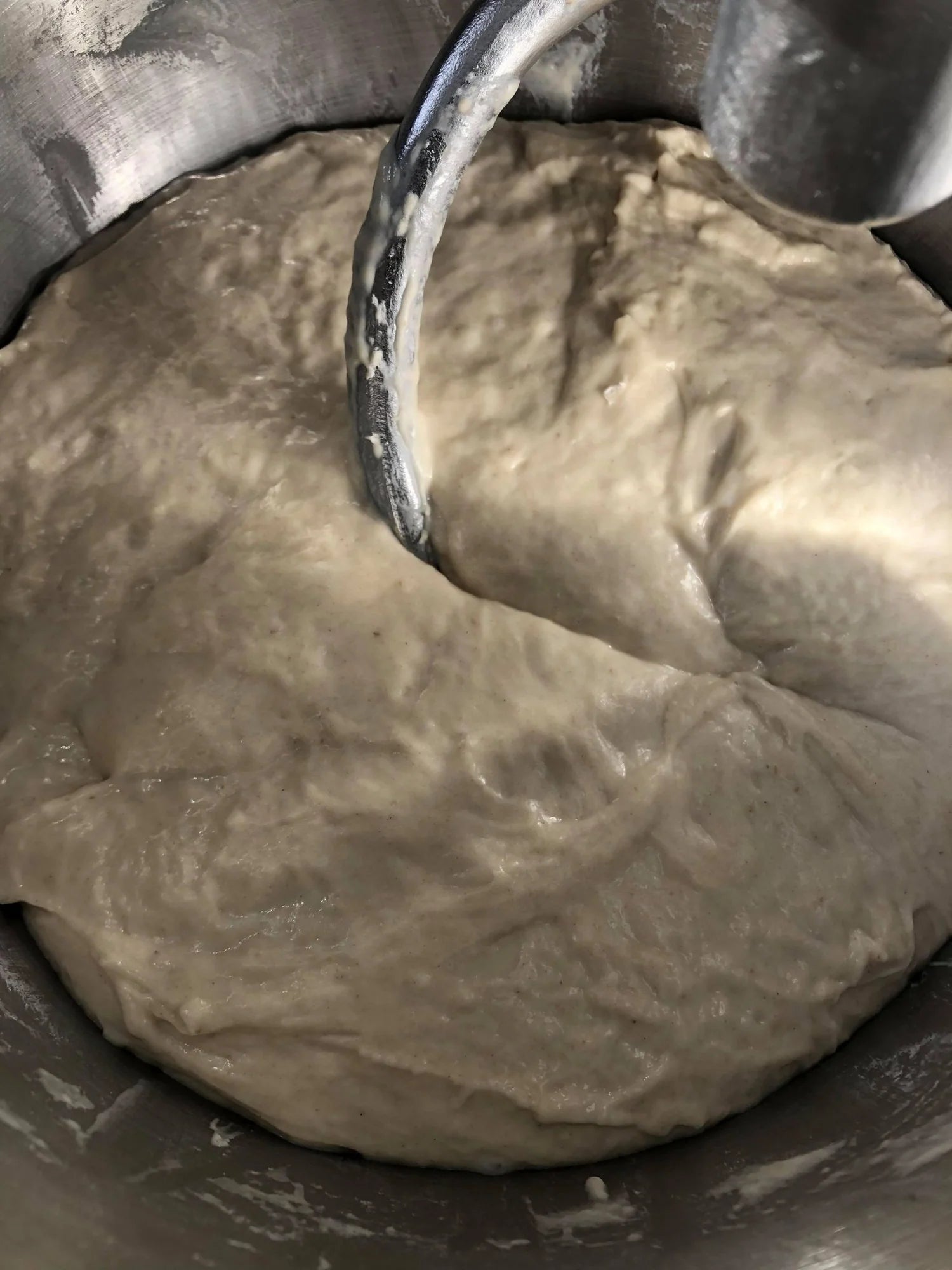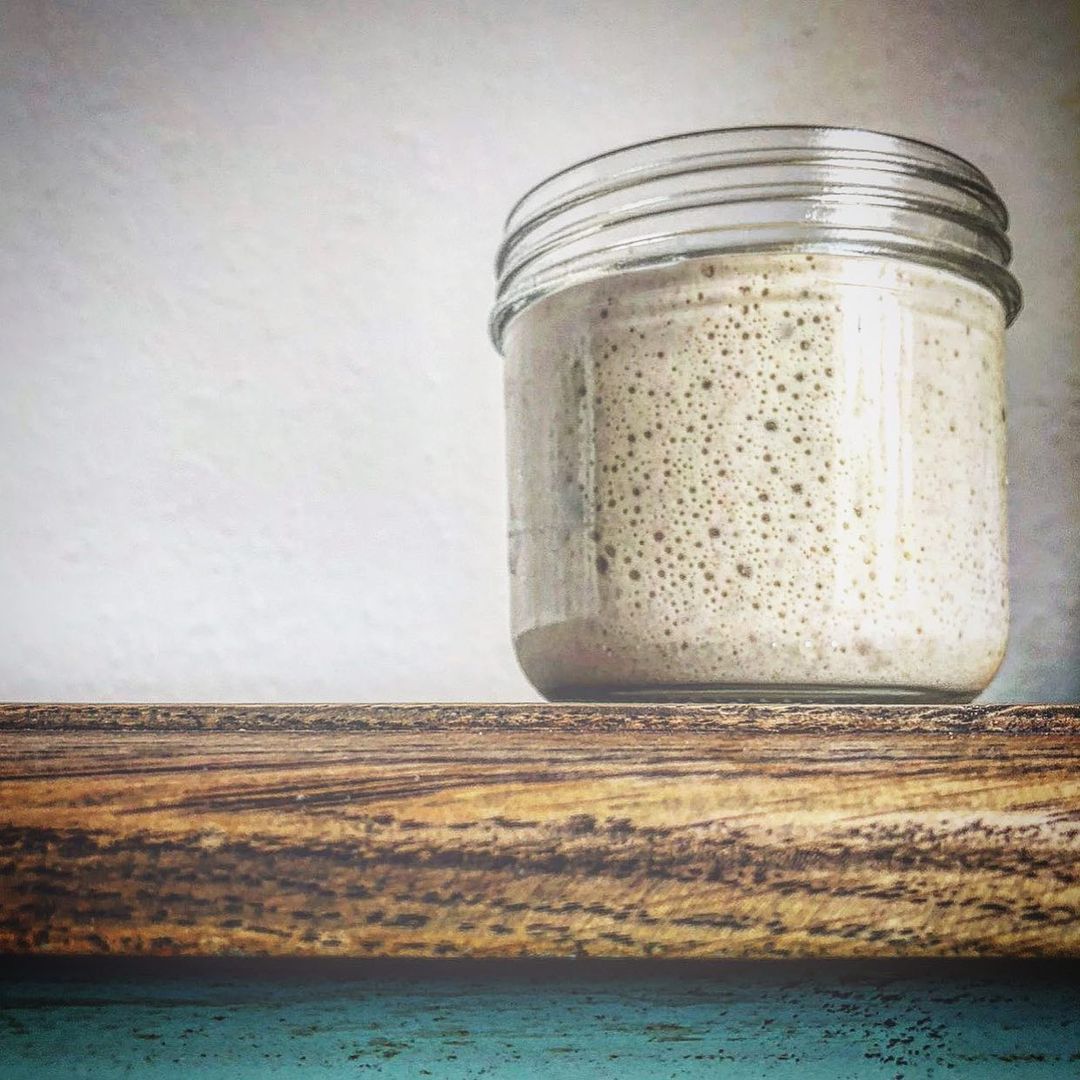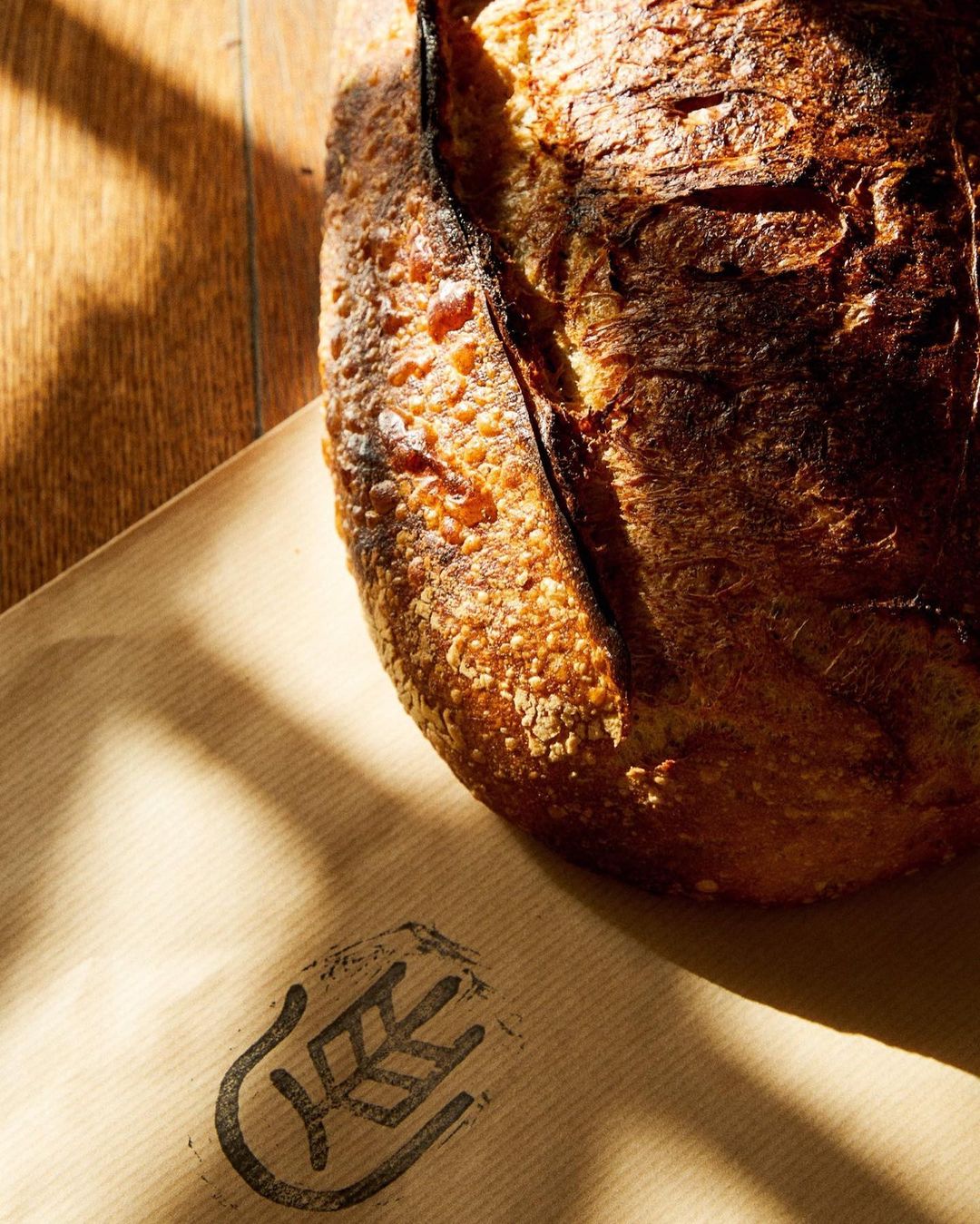
The Magic of Autolysis: A Simple Technique for Perfect Sourdough
What is Autolysis?
Autolysis is a practice that allows you to develop and prepare dough before stirring it completely. When you mix flour and water, gluten will form all by itself without kneading, as long as you give it enough time to rest. This resting process is called autolysis, which literally means "self-digestion" in Greek.
By allowing the dough to rest before kneading, the flour gets hydrated and possible enzymatic processes come into effect. Additionally, protease gently breaks down some of the gluten that forms when the dough rests, making it more pliable and easier to stretch.
Most sourdough bakers recommend a resting time of at least 20 minutes and up to 1-2 hours for wheat dough, though many prefer even longer or overnight autolysis, depending on the ingredients in the dough. Whole grains and shell parts may require longer autolysis while refrigeration may be necessary for extended rest times.
Benefits of Autolysis
There are several reasons to use autolysis in your sourdough baking:
Gluten Formation
Autolysis helps gluten formation in the dough, which is essential for the structure of the bread. During autolysis, flour and water are combined without agitation, allowing the flour to become fully hydrated over time. This hydration encourages the release of natural enzymes, which then begin to break down the complex protein structures of the flour, promoting gluten formation.
Better Flavor
Autolysis can create a richer flavor profile in your bread. By allowing the flour to fully hydrate, the natural enzymes will breakdown some of the starch, making the sugar available for the yeast or lactic-acid bacteria to use. The increase of acidity during fermentation also contributes to a more complex and flavorful bread.
Increased Dough Stretchability

Autolysis also leads to a more elastic and stretchy dough. When gluten forms, it helps to trap carbon dioxide produced by the yeast during fermentation, which makes the bread rise. Autolysis ensures a uniform, elastic dough that results in a fine-grained loaf of bread.
Time saver
Autolysis can save you time and energy in your baking. Instead of kneading hard to develop gluten, the dough is allowed to rest in the autolyze phase. With the gluten development process happening "on its own," you spend less energy kneading the dough manually or with a mixer.
Better Crumb and Exterior

Finally, Autolysis can help produce a better crumb and exterior. By properly hydrating your dough, it creates a moist environment that encourages a more open and flavorful crumb, as well as a lovely, crisp crust on the exterior of the bread.
Fermentolysis
Fermentolysis is a variation of autolysis that adds sourdough to the resting dough. The sourdough starter immediately kicks in and begins fermenting and working the flour with the acid. The acidity promotes greater protease activity, resulting in an even more stretchable and pliable dough. This is an excellent technique when you don’t have the time for longer resting periods.
Tips for Using Autolysis
Here are some tips to keep in mind when using autolysis:
- Plan ahead, make enough time to let the dough rest so the enzymes can do their work.
- Use hot water (not boiling) when starting autolysis. This makes the dough easier to handle down the road. If you are starting with a lot of cold water, you can also start with cold water when you use autolysis to counteract the frictional heat from kneading.
- If you are new to sourdough baking, start with a small amount of starter or no starter at all to allow the enzymes in the flour and water to work efficiently.
- Grain size and complexities can play a role in how long you should autolyze. The larger the pieces of grain, the more time it needs to absorb and absorb the water.
- Always weigh your ingredients for best results.
Equipment for Best Results
Here at SimpleSourdough, we offer several tools that can support your sourdough journey and make the autolysis process easier.
One of the most important pieces of equipment is a digital scale. The MyWeight KD-8000 Digital Scale w/ Bakers Percent allows for precise measurements for the best results.
Proofing baskets are essential for proper dough proofing to help form a better crust and crumb. We offer a variety of proofing baskets, including round grooved and oval designs on our website.
A proper scoring (or cutting) tool, such as our Bread Lame Ash or Smoked Oak designs, is crucial for proper steam release during baking. It also creates those beautiful designs and patterns commonly seen in artisan bread.
Finally, a sturdy Bench Knife Oak is not only useful to scrape and fold the dough but it also doubles as an essential tool for dividing dough.
Conclusion
Autolysis is a tried-and-true technique that can change the game for your sourdough baking. It is one of the simplest things you can do to improve your bread baking skills and make your sourdough taste better than before. By allowing the resting dough to work its magic and collaborating with the natural enzymes in the flour and water, you'll enjoy a more flavorful, stretchy bread with less work. By adding one of our many SimpleSourdough accessories, we can elevate your baking game, further enhancing the process of autolyzing, fermentolysing, and baking.
FAQs
- What is Autolysis?
Autolysis is a period where you let the dough rest after mixing before kneading or shaping it. During this time, natural enzymes present in the dough break down the starches and proteins in the flour, making them more available for yeast activity and resulting in better gluten development.
- When is the best time to add the sourdough starter in the fermentation process?
It is recommended to add the sourdough starter after the initial autolysis stage or during the fermentolysis stage.
- Can I refrigerate the dough during longer autolysis?
Yes, refrigeration can help control the process during longer autolysis, especially for dough with a lot of whole grains or shell parts.
- How long does autolysis take, and is there a maximum time limit?
Autolysis typically happens for 20 minutes to 1-2 hours, although some bakers prefer even longer resting times. There is no real maximum time limit, but results may vary depending on the ingredients in the dough.
- Can autolysis replace kneading altogether?
No, autolysis should not replace kneading altogether. However, it can save time and energy in your baking process and improve your dough's quality.
- What flour is best for autolysis?

Any flour works for autolysis. However, using high-quality flour is recommended. At Simple Sourdough, we provide various types of flour, including type 00 hvedemel, rugmel kornby molle, and olandshvedemel fuldkorn.
- How does autolysis affect the final product?
Autolysis improves dough texture, making it easier to handle and shape. It also allows the dough to expand and stretch efficiently.



Leave a comment
This site is protected by hCaptcha and the hCaptcha Privacy Policy and Terms of Service apply.